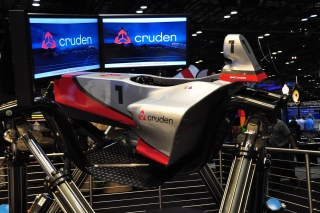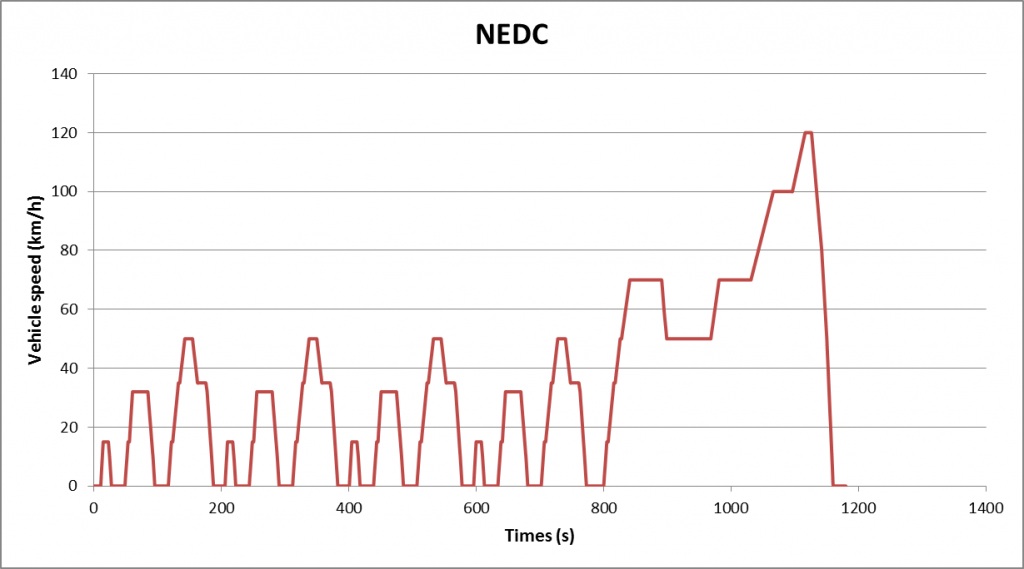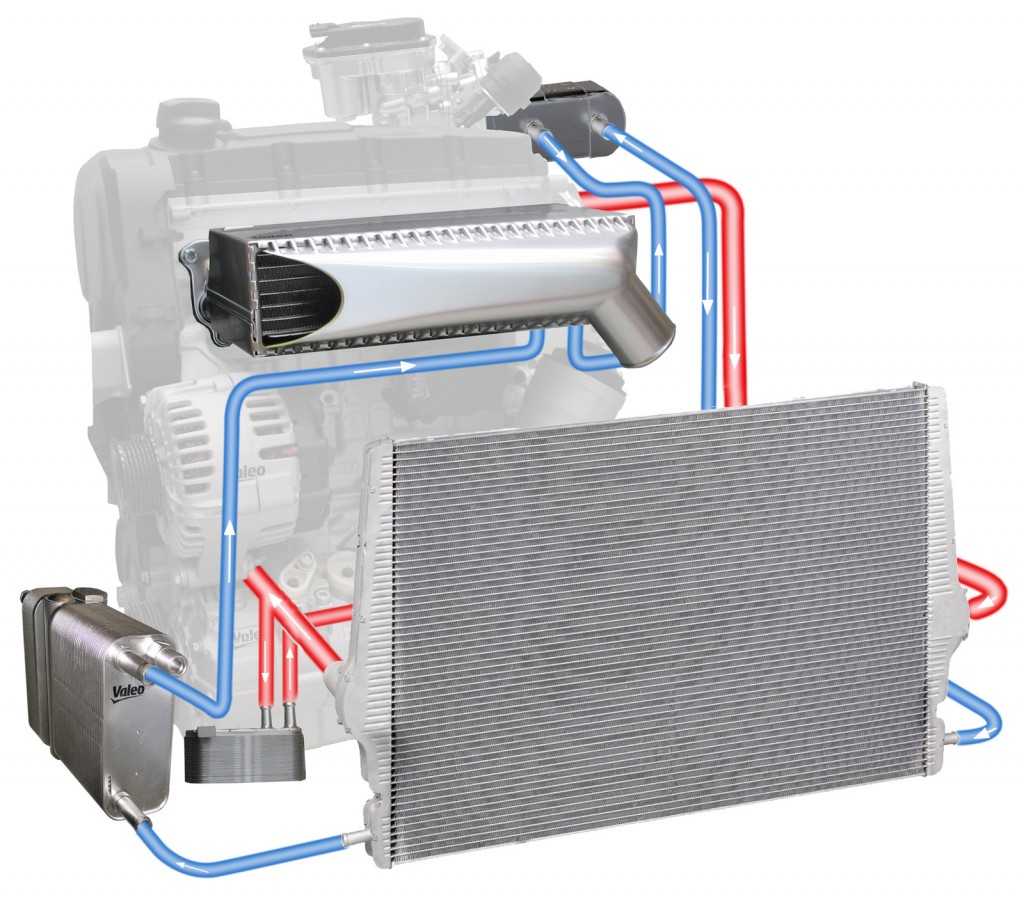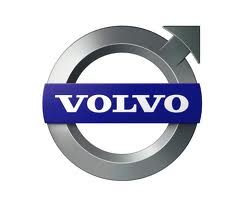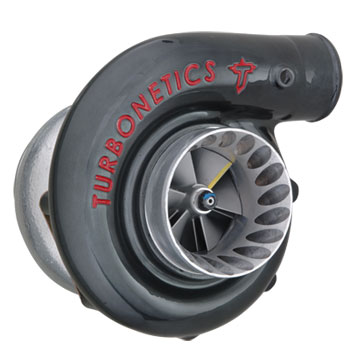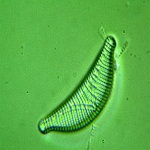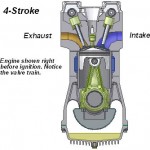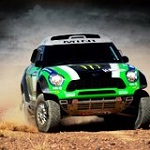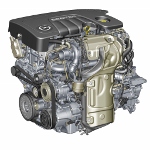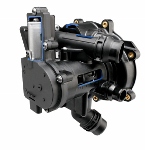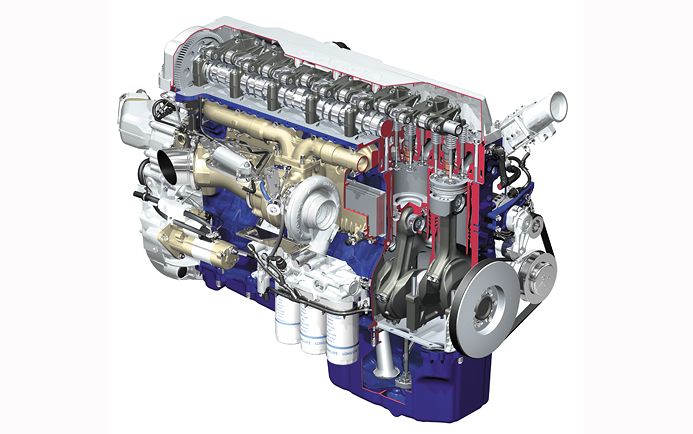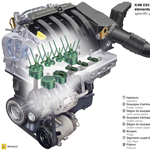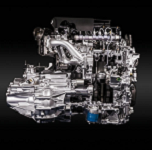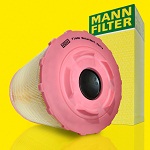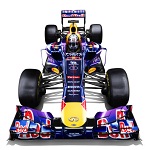BMW automobile owners are known to have some pretty strong opinions as to the best engines for their vehicles. Some prefer the classics, while others want all the power and torque today’s modern technology can muster.
Today, we’ll look at some of the best and most famous BMW engines throughout the company’s storied career.
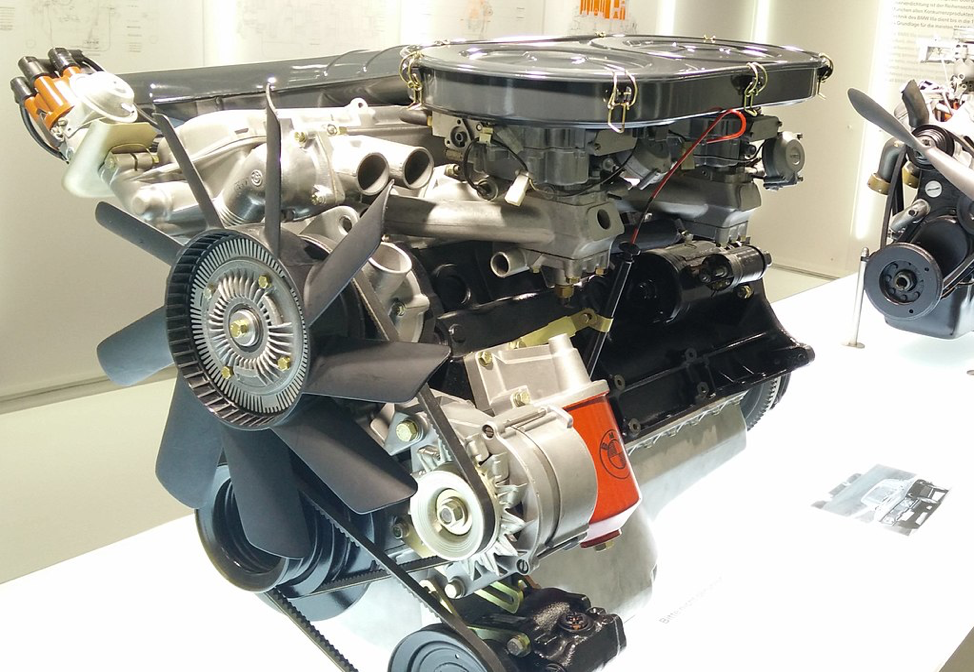
A BMW M30 engine, currently on display in the BMW museum. Source: Wikipedia, courtesy of Nathanael Burton.
Sources: BMW; Drivetribe; BimmerLife.
The Classic: BMW M30
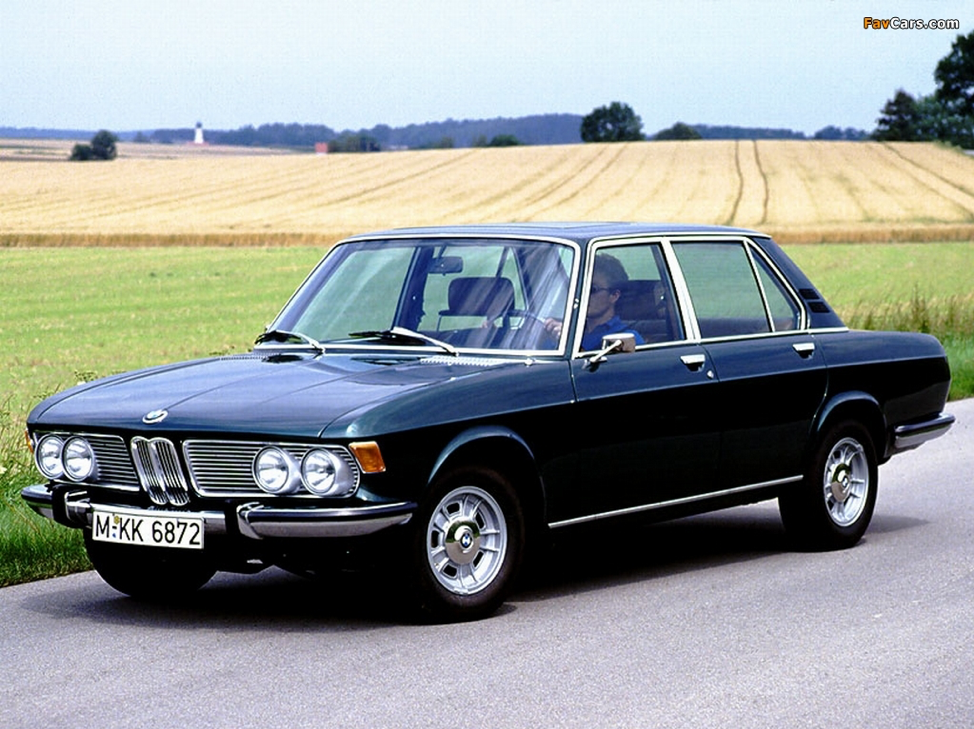
The BMW E3 from 1968 was the original recipient of the M30 engine. Source: FavCars.
This article will largely focus on one engine series in particular: the BMW M30.
The M30 is a legend. Though it began its phase-out process way back in 1990, when the M50 was introduced, the M30 stands tall today as one of the greatest and most popular engines BMW has ever made.
This engine, originally conceived in the latter half of the 1960s, emerged from the BMW M10 4-cyllender engine used in their sedans and coupes. While the M30 kept the 30º slant to lower the profile and the cylinder head and chain-driven camshaft stayed in place from the original M10, the M30 also introduced a number of notable improvements.
CLICK HERE FOR A VIDEO REBUILD OF THE BMW M30.
First manufactured in 1968, the M30 hit the market as a straight-six petrol engine with a single overhead camshaft (SOHC). It eventually became BMW’s longest produced engine of all time. It ruled the European racetracks and was a common sight zipping down the outer lane of the Autobahn during the 60s and 70s.
In total, there have been 10 versions of this engine made throughout the years. Their specifications are listed below:
- M30B25V: the granddaddy of them all, introduced in 1968. As a 2,494-cc engine with dual Solex Zenith 35/40 carburetors, the B25V was used in the E3 2500 from 1968 to 1977, and the E9 and E12 during various intervals after that. Its specifications are as follows:
- Power: 148 HP
- Torque: 156 lb-ft
- Bore: 86 mm
- Stroke: 86 x 71.6 mm
- Compression Ratio: 9.0:1
- M30B25: largely unchanged from the previous version, but with boosted torque and a Bosch L-Jetronic electronic fuel injection system added.
- Power: 148 HP
- Torque: 159 lb-ft
- Bore: 86 mm
- Stroke: 86 x 71.6 mm
- Compression Ratio: 9.0:1
- M30B28V: with boosted power output and torque, this engine used the same dual Zenith 3540 carburetor but had a slightly wider stroke. It was used in the E3, E12, and E23 up until 1979. It was used in E23, E24, and E28 from 1982 to 1988.
- Power: 168 HP
- Torque: 173 lb-ft
- Bore: 86 mm
- Stroke: 86 x 80 mm
- Compression Ratio: 9.0:1
- M30B28: this engine saw the Bosch L-Jetronic electronic fuel injection system added. This version was a 2,788-cc engine.
- Power: 181 HP
- Torque: 177 lb-ft
- Bore: 86 mm
- Stroke: 86 x 80 mm
- Compression Ratio: 9.0:1
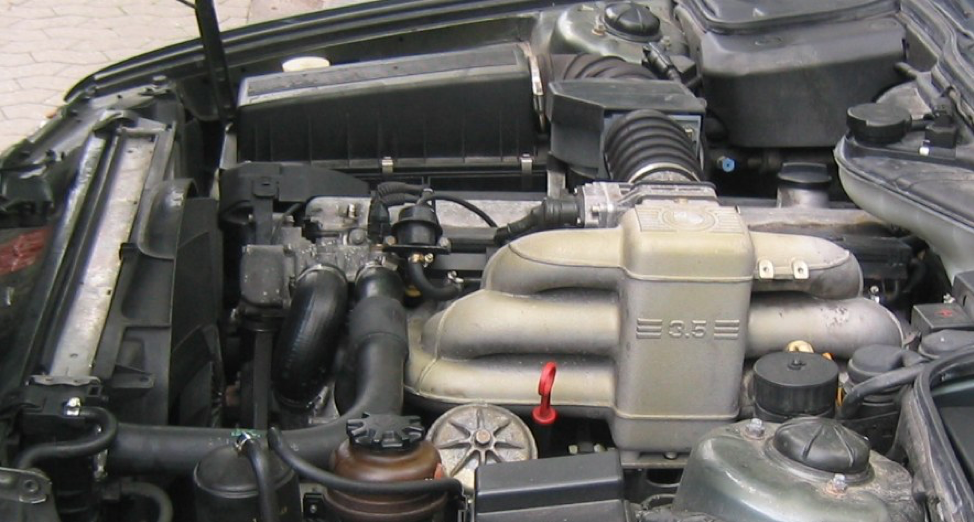
The M30B35 engine. The Bosch Motronic 1.3 digital fuel injection is a particularly notable feature of this engine version. Source: Wikimedia Commons.
- M30B30V: this version was largely unchanged from the previous M30B28, but with a slightly larger bore.
- Power: 177 HP
- Torque: 188 lb-ft
- Bore: 89 mm
- Stroke: 89 x 80 mm
- Compression Ratio: 9.0:1
- M30B30: While this engine initially had Bosch D-Jetronic mechanical fuel injection system, it was later upgraded to Bosch L-Jetronic. It also featured an unusual compression ratio of 9.5:1.
- Power: 200 HP
- Torque: 201 lb-ft
- Bore: 89 mm
- Stroke: 89 x 80 mm
- Compression Ratio: 9.5:1
- M30B32: As a direct successor to the M30B30, this engine used L-Jetronic from 1978 until mid-1981, when it switched over to Motronic digital fuel injection.
- Power: 197 HP
- Torque: 210 lb-ft
- Bore: 89 mm
- Stroke: 89 x 86 mm
- Compression Ratio: 8.8:1
- M30B33V: Though this engine was largely unchanged from the previous model, a few features are worth mentioning. Most notably, it has a slightly unusual bore and stroke of 89×88 mm. Additionally, this engine was only ever used in one model of BMW: the E3 3.3 L from 1973 to 1975.
- Power: 186 HP
- Torque: 213 lb-ft
- Bore: 89 mm
- Stroke: 89 x 88 mm
- Compression Ratio: 9.0:1
- M30B34: This engine used a 10.0:1 compression ratio in European markets, but 8.0:1 in Japan and North America. Regardless of markets, however, the Bosch Motronic digital fuel injection system was a key feature of this engine model.
- Power: 215 HP
- Torque: 229 lb-ft
- Bore: 92 mm
- Stroke: 92 x 86 mm
- Compression Ratio: 10.0:1 / 8.0:1
- M30B35: With a capacity of 3,430 cc, this engine’s B35 model code may have been a bit misleading. Nevertheless, it was able to produce 155 kW and 225 lb-ft of torque. Finally, it employed a Bosch Motronic 1.3 digital fuel injection. This engine was used in the E24, E32, and E34 from 1988 to 1992.
- Power: 208 HP
- Torque: 225 lb-ft
- Bore: 92 mm
- Stroke: 92 x 86 mm
- Compression Ratio: 9.0:1
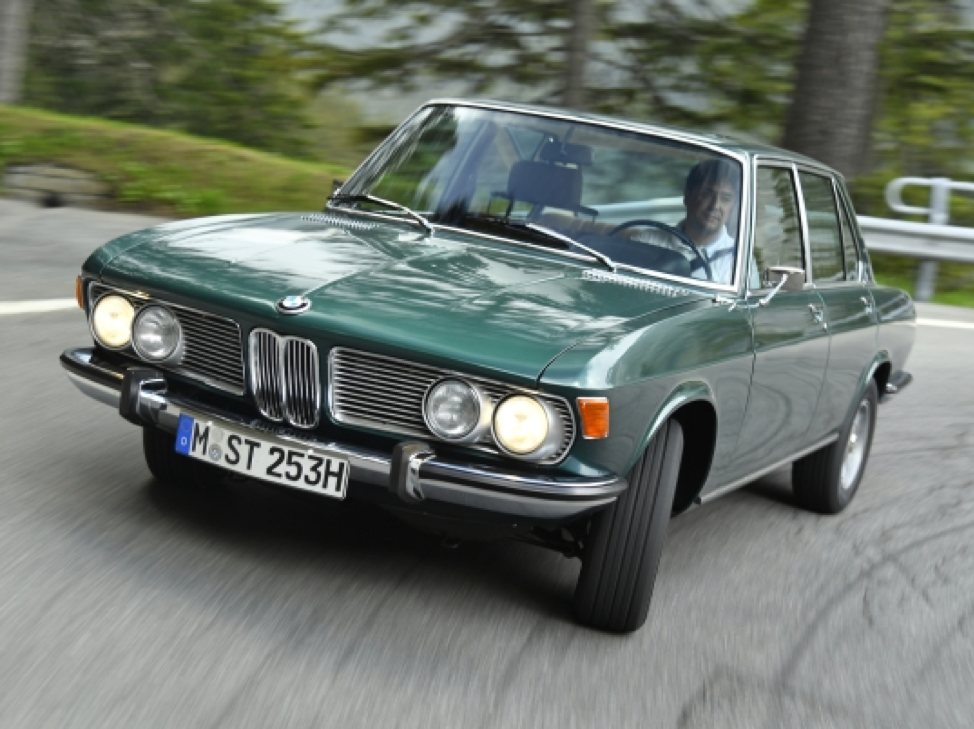
Source: Wheelsage.
The M30 E9 CSL
Now, if we had to pick one M30 to rule them all, it would be the Inline 6-cycle E9 CSL.
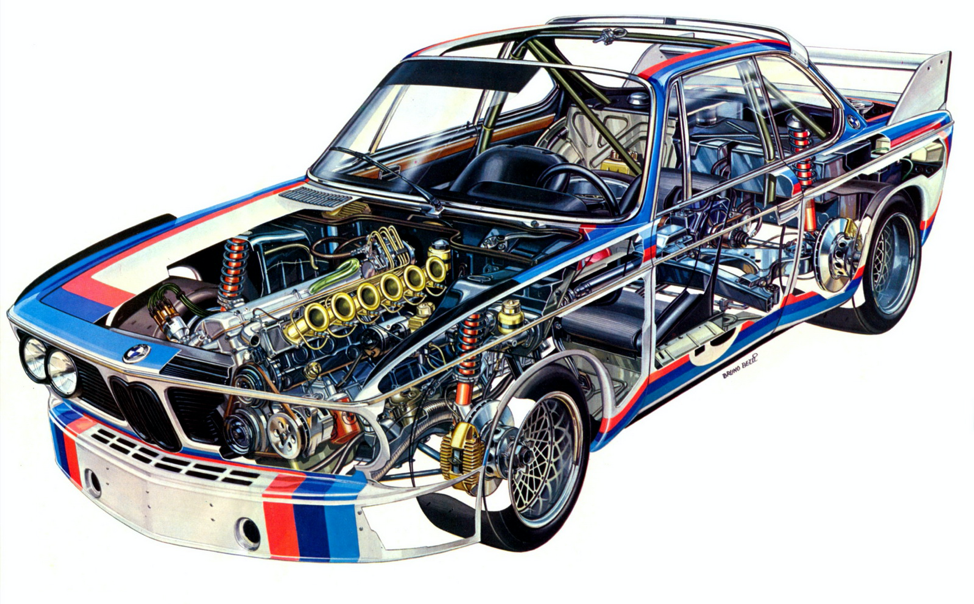
Source: Racing Cars Wikidot.
This engine dominated the European racing scene and made the BMW CSL (that’s “coupe sport lightweight” in case you didn’t know) famous. It could pump out 200 HP at a time when those numbers were virtually unheard of.
Sources: UltimateSPECS; Automobile Catalogue; Carfolio; motor-car.net.
The Intermediary: BMW S65 V8
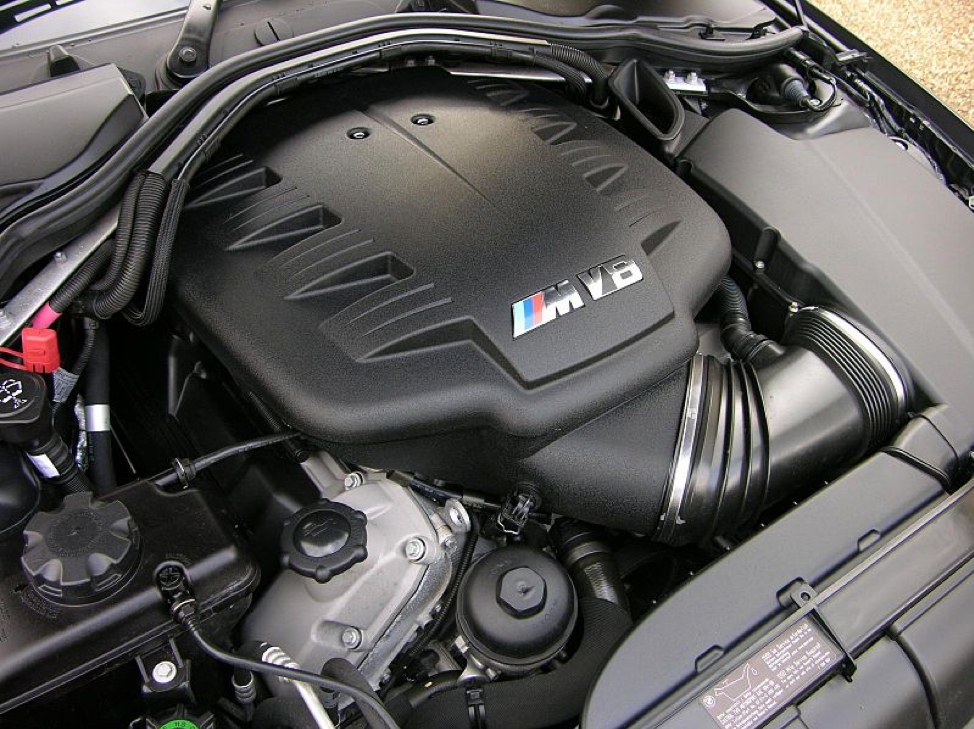
The S65 engine boasts a sleek and stylish modern aesthetic that perfectly encapsulates its deft balancing of power and efficiency. Source: Wikipedia, courtesy of The Car Spy.
As a naturally aspirated V8 engine produced from 2007 to 2013, the S65 is rather unique among BMW engines. Because the subsequent generation of M3s changed over to a straight-six turbocharged engine, the S65 was never directly ‘replaced’ in the usual sense of the term. Moreover, in contrast to its brethren BMW M engines, the S65 has no direct relation to any regular production engine from the company.
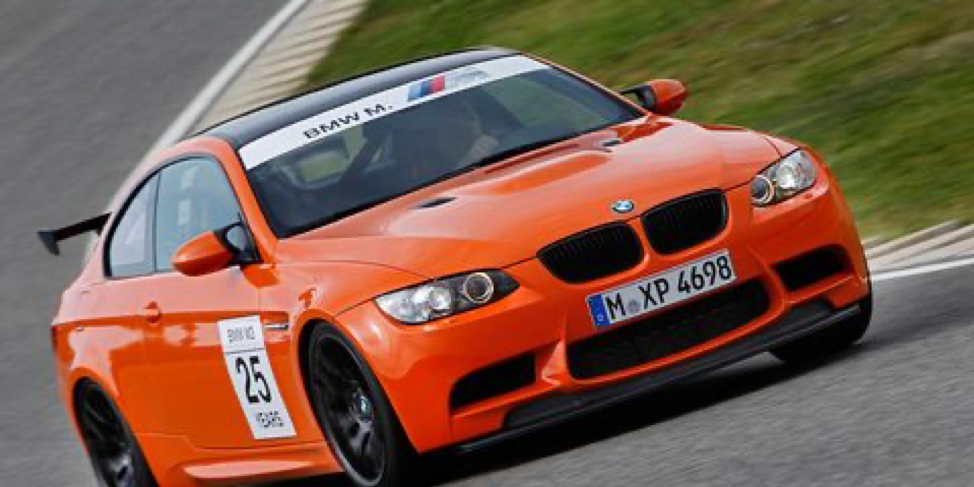
If you drive a BMW M3, you may be familiar with the perks and quirks of the S65 V8. Source: Car and Driver.
The original S65 B40 version had the following specifications:
- Power: 309 kW at 8,300 RPM
- Bore: 92 mm
- Stroke: 75.2 mm
- Compression Ratio: 12.0 / 1
Most subsequent versions of the engine stuck quite close to this basic formula.
According to Richard Cooper from Entrepreneurs in Cars, “the alternator actually disconnects during max acceleration.” This means that, “anytime you’re at full throttle … the engine doesn’t throw any drain onto the drivetrain. It only recharges the battery during deceleration and low-power requirements—cruising and things like that.”
CLICK HERE FOR A VIDEO EXPLANATION OF THE BMW S65 V8 ENGINE.
Additionally, “this particular engine … is actually 33 lbs. lighter than the inline-6 that it replaces … a V8 engine design is pretty compact,” Mr. Cooper added.
Interestingly, this engine also has a different firing order from the typical V8 engine. While most BMW V8 engines fire at 1-5-4-8-6-3-7-2, the S65 fires at 1-5-4-8-7-2-6-3. Do with that information what you will.
Sources: Entrepreneurs in Cars; BMWBLOG; motor-car.net.
The Modern Pinnacle: BMW N74
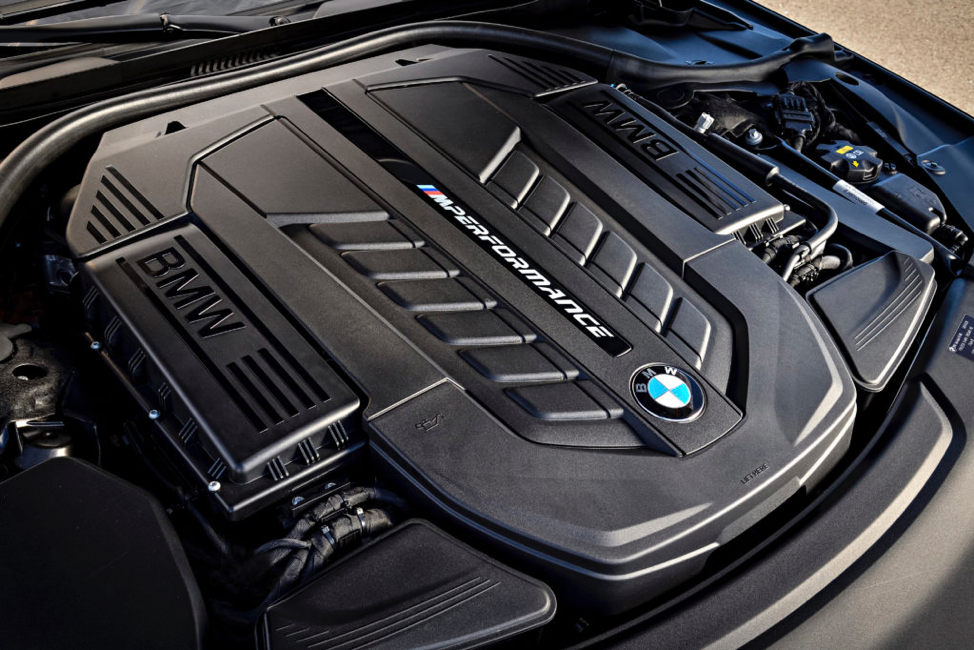
The N74 is the beating heart of the modern BMW. Source: BimmerLife.
Okay, but what about more modern BMW engines? What’s the best choice for a BMW right here right now in 2020?
That, in our humble opinion, is the BMW N74.
The N74 is a twin-turbo V12 supercharged engine that was first produced in 2008. Available since the 2009 model year, the N74 has had 4 versions over the years. However, it turns out you can’t improve upon perfection, and the subsequent versions have been largely identical to the original N74.
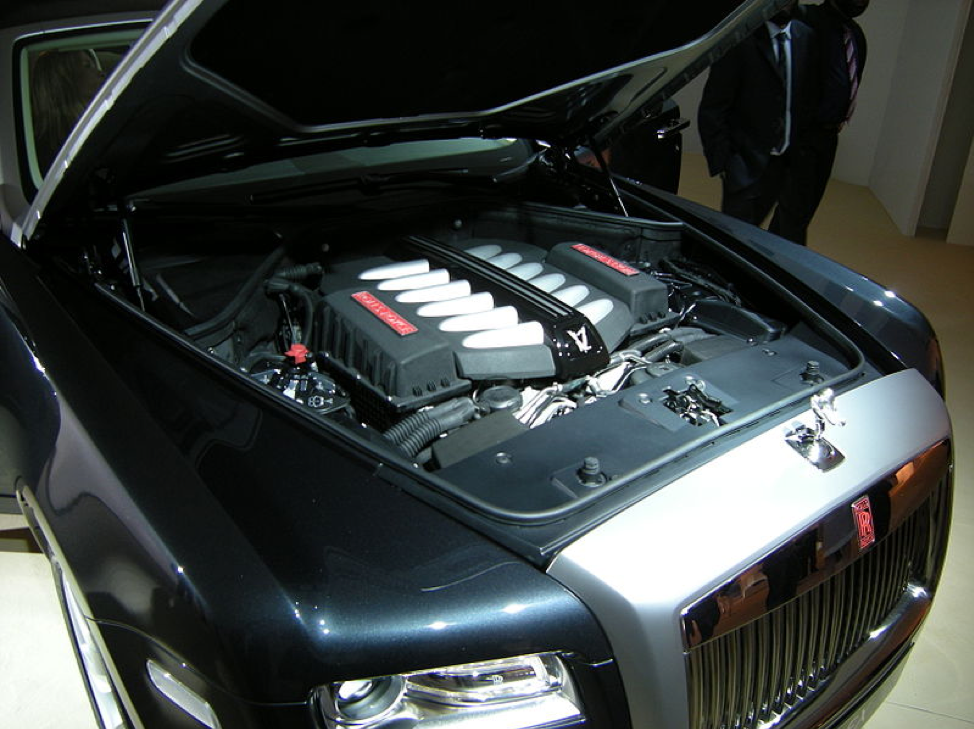
Check out this N74 inside a Rolls Royce Ghost. Source: Wikipedia. Courtesy of The Car Spy.
The versions of the N74 thus far are as follows:
- N74B60: This first version of the N74 came with a bore of 89 mm and a stroke of 80 mm. It was used in the F01, F02, and F03.
- Power: 536 HP
- Torque: 533 lb-ft
- Bore: 89 mm
- Stroke: 80 mm
- Compression Ratio: 10.0:1
- N74B66: reserved for Rolls-Royce models from the get-go, the power output for this version range from 563 to 624 HP horsepower.
- Power: 563/624/593 HP (depending on the model)
- Torque: 575/590/620 lb-ft
- Bore: 89 mm
- Stroke: 88 mm
- Compression Ratio: 10.0:1
- N74B66TU: largely unchanged from previous versions, but with a new G12 M760Li xDrive added. Found in the G12 M760Li xDrive.
- Power: 602 HP
- Torque: 590 lb-ft
- Bore: 89 mm
- Stroke: 88 mm
- Compression Ratio: 10.0:1
- N74B68: With identical displacement to the previous version at 6,749 cc and a power output of 563 HP, this version might not seem like much of a deal. But its exceptional 664 lb-ft of torque bests the rest of the range by a healthy margin. Currently found in the Rolls-Royce Phantom VIII and Cullinan.
- Power: 563 HP
- Torque: 664 lb-ft
- Bore: 89 mm
- Stroke: 88 mm
- Compression Ratio: 10.0:1
The N74 uses a DOHC VANOS direct-injected fuel system along with twin turbos mounted outside the cylinder banks. As the first BMW engine with 8-speed ZF automatic transmission, the original N74B60 offers an eye-popping 536 HP at 5,250 RPM.
Sources:BimmerLife; Driving Your Dream; motor-car.net.






